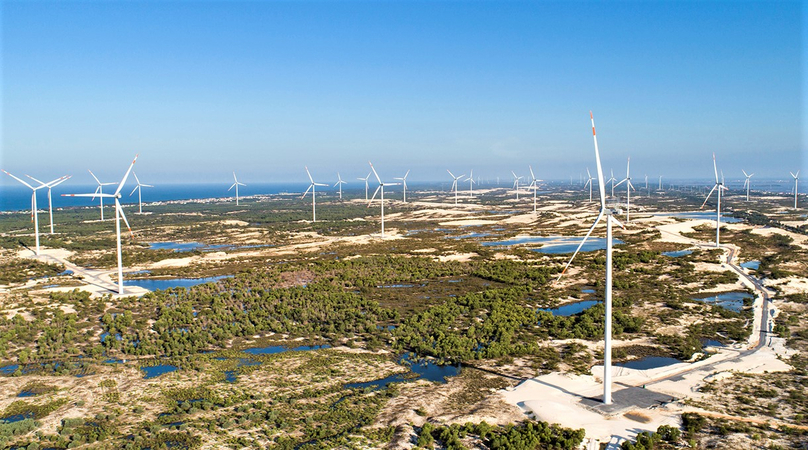Vietnam business opportunities aplenty in ascendant SEAsia: HSBC exec
Southeast Asia remains the world’s growth engine, and as an important economy in the region, Vietnam offers a lot of business opportunities in key areas, said HSBC Asia-Pacific’s Commercial Banking head for South and Southeast Asia, Amanda Murphy.
What is the role and growth potential of the Vietnamese market in Asia, according to HSBC?
I have been in my role for 18 months, and I am based in Singapore. We have located ourselves in Singapore in order to maximize the opportunities in South and Southeast Asia, including Vietnam.
When we look at Southeast Asia in particular, we’re very excited about the opportunities and Vietnam plays an important role, of course. We believe that HSBC has a unique footprint in the region with a presence in six of the 10 ASEAN markets.
Business opportunities in Vietnam are in many areas including transition to net zero emissions and other green projects. Furthermore, more and more multinational companies are present in the market for supply chain diversification as part of the “China plus one” global trend.
We want to work with businesses in Vietnam and help them fulfill their growth aspirations, either by bringing their business to other countries across the world or bringing other countries to invest here. That’s part of our mission. HSBC has been in Vietnam for over 150 years.
What are some growth opportunities in the carbon neutrality process?
Transition to net zero is a structural trend that is bringing tremendous opportunities as Southeast Asia races to “green its grid”. The region is among the world’s most at-risk regions when it comes to global warming in general and rising sea levels in particular. Yet demand for energy is growing rapidly to fuel the region’s development.

An operational wind farm in Quang Binh province, central Vietnam. Photo courtesy of Quang Binh newspaper.
Most of the energy for Southeast Asia comes from fossil fuels, so it is pleasing that Indonesia and Vietnam – two of the region’s most dynamic economies as well as two of the world’s top coal-burning countries – have announced their respective Just Energy Transition Partnerships, or JETP.
Under this new funding model, tens of billions of dollars in public and private finance will be mobilized, catalyzing the decarbonization of the countries’ power sectors and facilitating their energy transition.
For the Vietnam JETP, $15.5 billion was committed last December in the next three to five years, with HSBC being a partner supporting the country.
What’s the status of HSBC’s promotion of businesses led by women in Vietnam?
HSBC’s Female Entrepreneur Fund has set aside $1 billion to support female business owners around the world, helping them unleash their full potential and realize their ambitions.
The Nguyen Hoang Group based in Ho Chi Minh City has become the very first business in Vietnam to successfully register for the fund in August 2022 with a $75 million loan package.
As head of operations for South and Southeast Asia, can you tell us HSBC’s assessment of Southeast Asia in the global context?
Southeast Asia’s economic prospects stand in sharp contrast to the global economy, which faces a protracted period of high inflation and fragile demand. We see both short- and long-term causes for optimism for this dynamic region to remain the growth engine of the world.
Southeast Asia has come a long way as a manufacturing dynamo, now accounting for about 8% of global exports. Since 2020, it has surpassed the European Union to become China’s largest trading partner. This important trade corridor has been given a boost in the form of China’s reopening, as evidenced by the impressive Purchasing Managers' Index figures coming out of China.
Southeast Asia is also benefiting from a restructuring of global supply chains as it sits at the crossroads of two of the world’s largest free trade agreements, which are the Regional Comprehensive Economic Partnership, or RCEP, and the Comprehensive and Progressive Agreement for Trans-Pacific Partnership (CPTPP).
In particular, RCEP, with its tariff reductions and business-friendly rules of origin, is increasing the appeal of Southeast Asia as a manufacturing base, something more corporates are recognizing. According to a recent HSBC survey, over the next 12-24 months, Asia-Pacific companies will place 24.4% of their supply chains in Southeast Asia, up from 21.4% in 2020.
Vietnam, with its high level of international economic integration (15 ratified FTAs), is well-placed to tap such development trends.
Does HSBC tap other financing sources for Southeast Asia?
We have a partnership with Temasek Holdings, Singapore’s state-owned investor, for Southeast Asia.
The two sides partnered in September 2021 to establish a debt financing platform dedicated to sustainable infrastructure projects with an initial focus on Southeast Asia, as part of efforts to reduce climate change.
The platform aims to catalyze significant capital flows to the sustainable infrastructure space, deploying blended finance at scale over time to unlock more marginally bankable projects and create a tradable asset class, crowding in private and institutional investors.
HSBC and Temasek plan to invest up to a combined $150 million of equity to fund loans, working alongside the platform’s strategic partners in the initial phase. Over the longer term, the ambition is to build a pipeline of projects to scale, with the platform dispensing over $1 billion of loans within 5 years.
The Asian Development Bank and Clifford Capital Holdings support the platform as strategic partners. ADB provides various forms of assistance to the platform, including technical assistance and project development expertise, while Clifford Capital provides its project finance expertise as well as ongoing operational mid and back-office support to the platform.




